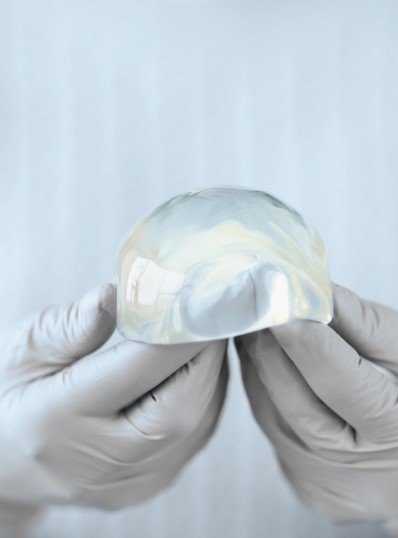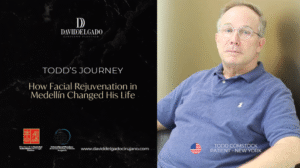If you’re considering a boob job and feeling a little stuck between saline and silicone implants, I get it. You want results that look amazing, feel natural, and fit you—not just some trend online. And choosing the right implant is a big part of that.
I’m Dr. David Delgado, and I’ve helped thousands of women—from all over the world—feel more confident in their bodies. Whether you’re flying in from the U.S. or visiting from another part of Colombia, I want you to feel supported, informed, and excited about your decision.
This quick guide will help clear up the confusion and give you a better idea of what might be right for you. So let’s break it down together—no pressure, just honest guidance based on what actually works.
You might be interested: Safe, Affordable, and Personalized: Getting a Boob Job in Colombia
Saline vs. silicone implants: What’s the difference?
Choosing between saline and silicone implants isn’t just a technical decision—it’s a personal one. Each option offers its own look, feel, and benefits depending on your body, lifestyle, and aesthetic goals. Here’s what you need to know:

Saline implants: Simple, adjustable, and trusted
Saline implants are filled with sterile saltwater after they’re placed inside the breast. That means they can be adjusted during surgery for small size tweaks and often require a slightly smaller incision.
Pros:
- Typically lower cost
- Filled after insertion—smaller scar
- Body safely absorbs saline if ruptured
Consider if: you want peace of mind in case of rupture or prefer a slightly firmer feel.

Silicone implants: Softer, natural feel
Silicone implants come pre-filled with cohesive silicone gel, giving them a look and feel that closely mimics natural breast tissue. Most of our international patients choose silicone for this reason.
Pros:
- More natural shape and softness
- Less visible rippling under the skin
- Widely preferred for aesthetic results
Consider if: you’re looking for a softer, more natural feel and fuller look.
How to choose the right implant for you
Every woman’s body—and vision—is different. That’s why there’s no one-size-fits-all answer when it comes to saline vs. silicone implants. The “right” choice isn’t just about the material—it’s about what fits you.
Body type, lifestyle, goals. They all matter
The best implant for you depends on several things:
- Your body type – Are you naturally petite? Do you have more breast tissue to start with?
- Your expectations – Are you going for a subtle, natural enhancement or a more dramatic transformation?
- Your lifestyle – Are you highly active, athletic, or planning on having kids soon?
These are all things we’ll explore together before making any decision. This isn’t just a medical procedure—it’s a personal journey, and your implants should reflect that.
You don’t have to decide alone
Trying to figure this all out on your own can feel overwhelming—especially with all the opinions online. That’s why working with an experienced, aesthetic-focused surgeon makes all the difference.
I take the time to understand your vision, measure your body carefully, and walk you through the pros and cons of each option—not just what’s trending, but what will give you the best result.
What happens if an implant ruptures?
Let’s talk about something most people avoid: what actually happens if an implant breaks. While implant ruptures aren’t common, they can happen—and it’s important to understand the difference between saline and silicone implants in this situation.
If a saline implant ruptures…
You’ll know right away. The implant will deflate, and your breast will lose volume quickly—usually within a day or two. It might look uneven or feel off, but the good news? The saline solution is completely harmless and safely absorbed by your body.
The outer shell will still need to be removed and replaced through a simple procedure, but medically, it’s not urgent or dangerous.
If a Silicone Implant Ruptures…
It’s often called a “silent rupture” because you might not notice anything right away. The silicone gel tends to stay trapped in the surrounding tissue, which means your breast could look fine even though the implant is damaged.
Over time, though, you might experience:
- A change in shape or firmness
- Mild pain or breast thickening
- A subtle shift in how the breast feels
In these cases, we typically recommend removing and replacing the implant. That can often be done in the same surgery.
Why this matters when you’re choosing implants
Understanding how each type behaves in the rare event of a rupture is a big part of making the right choice for you.
Some patients choose saline for the peace of mind that comes with an obvious, visible rupture. Others prefer silicone for its more natural feel and look, knowing they’ll stay on top of their routine checkups or imaging when needed.
Whichever direction you’re leaning, I’ll walk you through the risks and help you make a decision you feel completely comfortable with.
Why so many women are choosing Colombia for boob job
Getting a boob job abroad might sound like a big step—but Colombia has become one of the most trusted destinations for safe, high-quality plastic surgery. Here’s why:
1. World-class surgeons at a fraction of the cost
In Colombia, you get the same level of expertise you’d expect in the U.S.—without the overwhelming price tag. Dr. Delgado offers beautiful, natural-looking results at a cost that makes your dream surgery more accessible.
2. Certified, internationally trained expertise
Dr. Delgado is a proud member of the American Society of Plastic Surgeons (ASPS). This guarantees you’re working with a surgeon who meets the highest international standards in ethics, safety, and surgical skill.
3. A globally accredited surgical facility
All procedures are performed at Interquirófanos, a private surgical center in Medellín that holds certification from the Joint Commission International (JCI)—the gold standard in global healthcare quality and safety.
4. Personalized, bilingual care
From your first virtual consultation to post-op check-ins, you’ll receive one-on-one attention, clear communication, and a treatment plan designed around you—not a one-size-fits-all approach.
5. Recover in a beautiful, welcoming city
Medellín offers modern comforts, top-tier recovery options, and a peaceful environment that helps you heal in style. Many of Dr. Delgado’s international patients say they felt more relaxed here than back home.
Saline vs. Silicone implants: Which one fits you best?
While both saline and silicone implants are safe and effective, they offer different experiences when it comes to look, feel, and long-term care. This side-by-side comparison will help you see the key differences at a glance—and make a more confident decision.
| Feature | Saline Implants | Silicone Implants |
|---|---|---|
| Filling Material | Sterile saltwater (saline) | Silicone gel |
| Feel | Firmer, rounder feel | Softer, more natural feel |
| Rupture Detection | Easy to notice (visible deflation) | Often silent, detected by MRI or ultrasound |
| Incision Size | Typically smaller (filled after insertion) | Slightly larger (pre-filled implant) |
| Age Requirement (U.S.) | 18+ years for cosmetic augmentation | 22+ years for cosmetic augmentation |
| Cost | Usually more affordable | Slightly higher cost |
| Risk of Rippling | Slightly higher, especially in thinner patients | Less visible rippling |
| Monitoring Needs | No special imaging needed | MRI or ultrasound recommended every few years |
| Popularity Among Patients | Less commonly requested | Most popular choice for a natural look |
Book a virtual consultation with Dr. Delgado to choose between saline and silicone breast implants in Colombia
Choosing between saline and silicone implants isn’t just a technical choice—it’s about how you want to feel in your body. Whether you’re still unsure or already leaning in one direction, you deserve honest, expert guidance tailored to your goals.
Dr. David Delgado offers private video consultations for international patients, so you can get all your questions answered from the comfort of home—before making any travel plans. He’ll help you understand your options, evaluate what’s best for your body, and design a surgical plan that fits your lifestyle and vision.
It’s your body, your decision—and we’re here to support you every step of the way.
Frequently asked questions saline vs. silicone implants
What’s the difference between saline and silicone implants?
The main difference between saline and silicone implants is what they’re filled with. Saline implants contain sterile saltwater and are filled during surgery, while silicone implants come pre-filled with silicone gel. The outer shell is the same for both, but the feel and look can vary significantly.
How do saline vs. silicone implants look?
Silicone implants tend to look more natural, especially in patients with less breast tissue. Their gel filling gives them a smoother, more organic shape. Saline implants may appear slightly rounder or firmer, and in thinner patients, they may show more visible rippling under the skin.
Which is better: saline or silicone implants?
There’s no one-size-fits-all answer. Both are safe and widely used. Silicone is often preferred for a natural look and feel, while saline is popular for peace of mind—especially since ruptures are easily detected. The best choice depends on your body, goals, and lifestyle. Dr. Delgado will help you decide during your consultation.
Is saline or silicone implants better for me?
It depends! If you want the most natural look and feel, silicone might be the better option. If you prefer knowing right away if something goes wrong, saline offers that visibility. Dr. Delgado considers factors like your anatomy, activity level, and aesthetic goals to recommend the best fit for you.
What happens if a saline breast implant ruptures?
When a saline implant ruptures, the breast deflates quickly as the saline is safely absorbed by the body. It’s not dangerous, but the implant will need to be removed and likely replaced. Most women notice the change within 24–48 hours.
How often do silicone implants need to be replaced?
Silicone implants don’t have an expiration date, but they’re not considered lifetime devices. On average, they last 10–20 years. The FDA recommends getting an MRI or ultrasound every 5–6 years to check for silent ruptures, even if you have no symptoms.
Are saline or silicone implants safer?
Both types are considered very safe when placed by a qualified plastic surgeon. Rupture detection is easier with saline, while silicone offers more natural aesthetics. The key to safety is choosing a surgeon like Dr. Delgado, who uses FDA-approved implants and operates in a JCI-certified facility.
Saline or silicone implants: which should I choose?
If you’re unsure, that’s completely normal. Dr. Delgado offers virtual consultations to help international patients understand their options, compare saline and silicone implants, and feel confident before traveling to Colombia. You don’t have to decide alone.



